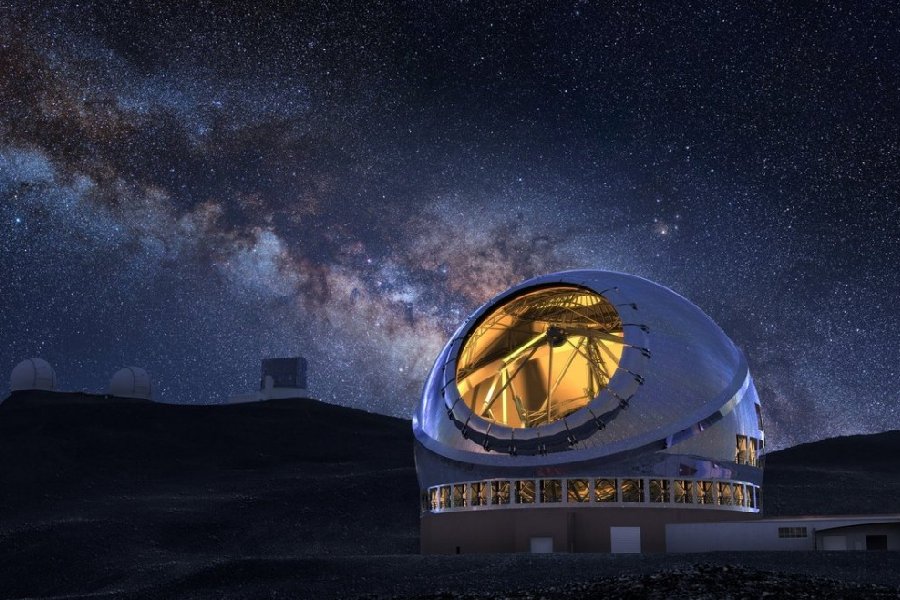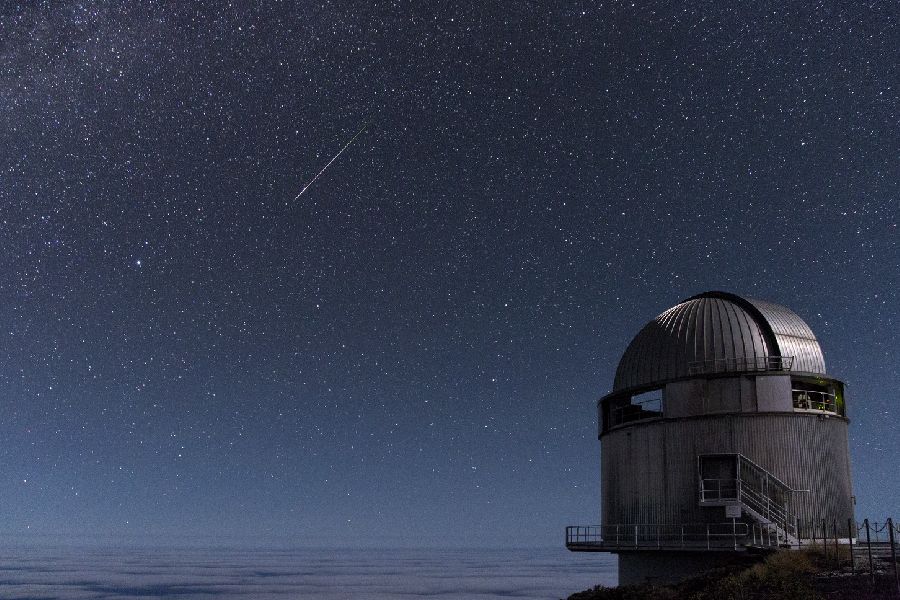When we gaze up at the stars, we see the cosmos from our earthly view, leaving us in awe of the reflection of stars yet curious about the mysteries of nature. To help us answer our questions, our ancestors invented instruments to look over and observe the sky and find more about the universe that surrounds us, and we are especially interested in the facility where scientists observe the events in space. Therefore, what are observatories?
By peering through the astronomical lens these facilities provide, we can explore galactic and intergalactic phhenomena lightyears beyond our solar system.
What secrets of the universe might these exceptional vantage points reveal through areas like astrophotography, astrophysics, and cosmology? Read on to understand what observatories entail for next-level space science.
What Are Observatories?
Observatories are facilities equipped with specialized instruments and technologies designed to observe and study various astronomical phenomena. They are often located in strategic locations with minimal light pollution to maximize the clarity of observations.
Observatories can focus on different parts of the electromagnetic spectrum, including visible light, radio waves, infrared, and more. Astronomers use observatories to explore and analyze celestial objects such as stars, planets, galaxies, and other cosmic phenomena.
These facilities play a crucial role in advancing our understanding of the universe by collecting data and conducting research in the field of astronomy.

Types of Observatories
Astronomical observatories
Astronomical observatories are facilities equipped with cutting-edge telescopes and instrumentation to observe astronomical objects like stars, planets, and galaxies. They are usually located at high altitudes with clear, dark skies, providing ideal conditions for peering deep into space.
These observatories can be grouped into categories based on their location and areas of focus:
- Ground-based observatories– study the electromagnetic spectrum from radio waves to gamma rays. Famous examples include Mount Wilson Observatory and Palomar Observatory.
- Space observatories– like the Hubble Space Telescope, orbit the Earth to transcribe infrared, optical, ultraviolet, and X-ray wavelengths blocked by Earth’s atmosphere.
- Airborne observatories– aboard balloons or aircraft fly above obstructing atmospheric water vapor, carbon dioxide, and particulate matter to enable key infrared and submillimeter observations.
Significance in advancing astronomical knowledge
Cutting-edge telescopes and instrumentation at observatories enable astronomers to peer deeper into space and further back in time.
They expand our understanding of the formation and evolution of stars, exoplanets, galaxies, black holes, and cosmic expansion. Ultra-sensitive detectors even allow the measurement of faint celestial signals from the early universe.
Findings from astronomical observatories help piece together facts about the beginnings of space and time with the Big Bang. Ongoing studies continue to build knowledge in cosmology, star life cycles, hunting for habitable worlds, and more to unravel the mysteries of the universe.
Space observatories
Space observatories are telescopes orbiting the Earth to capture images and data across infrared, optical, ultraviolet, and X-ray wavelengths of light. Unencumbered by Earth’s filtering atmosphere, space telescopes provide extremely clear astrophysical observations.
Major areas of focus include:
- Imaging exoplanets and characterizing their atmospheres
- Studying earliest star formation and galaxy evolution
- Mapping distributions of dark matter and dark energy
- Discovering the most energetic gamma-ray bursts and cosmic explosions
Examples of space observatories
- Hubble Space Telescope– captured extraordinary deep field galaxy images and helped fine-tune the rate of universe expansion
- Chandra X-Ray Observatory– revealed hottest regions of supernova remnants, black holes, and high-energy cosmic events
- Spitzer Space Telescope– enabled key infrared observations of cosmic dust clouds harboring stellar nurseries
- Kepler Space Telescope– discovered over 2,000 exoplanets through transit photometry before running out of fuel
- James Webb Space Telescope– built to observe the first galaxies formed after the Big Bang and analyze exoplanetary atmospheres
Volcano observatories
Volcano observatories monitor active or potentially active volcanoes using specialized instruments and research. Monitoring helps predict eruptions to save lives, while studying volcanism furthers understanding of Earth’s interior processes.
Observatory functions include
- Measuring rising magma, swelling terrain, and quakes signaling impending eruptions
- Tracking gas emissions and chemical composition changes
- Creating hazard maps and early warning systems for nearby communities
- Coordinating emergency response plans with authorities
- Advancing scientific knowledge in volcanology and plate tectonics
Importance in monitoring volcanic activity and ensuring public safety
Volcano observatories are vital for detecting signs of unrest, forecasting imminent threats based on prior eruptions, and quickly coordinating evacuations or other life-saving measures.
Combining high-tech monitoring, computational models, and expert volcanologists enables precautions protecting millions of people in volcanic regions worldwide.
For example, the Hawaiian Volcano Observatory averted disasters through crucial warnings about 2018’s Kīlauea eruption. These warnings allowed evacuations before 26 houses were destroyed by lava. The long-term dedication of volcano observatories to public safety continues to show indispensable value.

Overview of Optical Telescopes
Importance in astronomical observations
Optical telescopes have played a pivotal role in astronomy for centuries, from Galileo’s earliest models to today’s grand observatories like the Keck Telescopes. They utilize visible, ultraviolet, and infrared light to study stars, planets, asteroids, supernovae, black holes, galaxies, and exoplanet transits across distant suns.
Continual improvements in optical technology, mirror engineering, and detection instrumentation have exponentially increased discovery potential. Modern optical telescopes now enable the analysis of the chemical makeup of exoplanetary atmospheres; crystallizing galaxies formed just 500-800 million years after the Big Bang, and more wonders.
Key components and features
All optical telescopes rely on concave mirrors or lenses to gather and focus light, plus mountings and structural supports. However, various specialized components and features enable different observational capabilities:
- Objectives– the primary light-gathering lens or the curved mirror determines collecting area and angular resolution. Larger objectives mean more light capture.
- Tubes– house and protect optical components. Designs include sealed, ventilated, collapsible, and carbon fiber tubes.
- Mirror supports– minimizes gravitational distortion using thick buttressed frameworks or thin warping harnesses.
- Mounts– equatorial mounts track celestial objects as Earth rotates. Altazimuth mounts simplify aiming up/down/all-around.
- Secondaries & diagonals– redirect focused light to eyepiece and instruments without image flipping.
- Focusers– adjust stage positioning eyepieces/cameras precisely in light path. Can be manual or motorized.
- Adaptive optics– deform mirrors help counteract atmospheric distortion.
- Coronagraphs– block starlight to Enable analyzing nearby exoplanets.
- Instruments– attachments like spectrographs break light into analyzed wavelengths.
The right combination of features suits different science goals, sites, and budgets – from compact starter scopes to the grand 28-meter Giant Magellan Telescope coming in 2025.
Types of Optical Telescopes
There are three main classes of optical telescopes: refractors using lens objectives, reflectors using mirrors, and compounds combining both lens and mirror elements.
Refracting telescopes
Refracting telescopes utilize a glass lens as the objective to gather and focus light. Common varieties include:
- Galilean– a plano-concave eyepiece lens paired with a plano-convex objective. Provides upright images useful for terrestrial viewing.
- Keplerian– adds a second convex lens as the eyepiece for enhanced magnification. Useful for lunar, planetary and bright stellar observation.
- Achromatic– additional lens elements correct color aberration letting full visible spectrum focus accurately. Enables detailed planetary and deep space observation.
Advantages of such refractors include crisp, high contrast views and durability. But lens size, cost, and chromatic aberration often limit light grasp and scaling potential.
Reflecting telescopes
Reflecting telescopes rely on curved mirrors rather than lenses to collect and focus light. Some key types are:
- Newtonian– a parabolic primary mirror reflects light to a small diagonal secondary mirror, directing light to an eyepiece at the side of the main tube. Most cost-effective design.
- Cassegrain– adds a convex secondary mirror reflecting light through the hole in the main mirror to an eyepiece/camera behind it.
- Dall-Kirkham– minimizes aberrations in large-aperture applications like professional observatories and orbital space telescopes.
Reflector advantages include excellent light-gathering capacity and fewer chromatic issues. But, support structures can block some light paths and require frequent adjustment.
Compound telescopes
Compound or catadioptric systems combine both lens and mirror elements, merging benefits from refractor and reflector systems:
- Schmidt-Cassegrain– pairs a spherical primary mirror with an aspheric correcting lens at the front opening. This type of telescope is a very versatile mid-level amateur astronomy design.
- Maksutov– combines a spherical mirror with a strongly curved meniscus correcting lens often made of more durable calcium fluoride or other materials, and offers excellent image sharpness.
- Ritchey-Chrétien– specialized professional-grade telescope using both a hyperbolic primary and secondary mirror. The Ritchey-Chrétien delivers the widest possible field of sharp focus – ideal for astrophotography and science instruments.
The hybrid optics of compound telescopes deliver excellent performance, though at relatively high cost and complexity. They continue seeing heavy usage in both advanced amateur equipment and research observatories.

The Components of an Optical Telescope
There are three key components central to every optical telescope design – the lens or mirror that gathers in light (objective), plus magnifying eyepieces and structural supports.
Objective lens/mirror
The objective is the most vital component, made up of either:
- Objective lens in refractors– made of crown and flint glass to gather wide spectrum light at high resolution, though chromatic aberrations limit their maximum size.
- Primary mirror in reflectors– molded precision glass or machined metal paraboloid up to 8-10 meters across for space telescopes. Much cheaper to scale than lenses.
In either case, the wider the objective aperture, the more light that is collected and the higher the attainable magnification power. Objectives range from palm-sized to over 30 meters across projects like the Giant Magellan Telescope.
Eyepiece
The eyepiece sits at the rear of the optical path, where focused light converges. It essentially works like a magnifying glass for visual observation. Most have threaded cells for interchangeability. Parameters like field of view, eye relief, and optical aberrations differ greatly between models.
Mounting and support systems
Telescopes require firm foundations and motors to track astronomical objects as the Earth rotates without inducing vibrational distortions. Major classes include:
- Alt-azimuth mounts– simple vertical and horizontal axis slewing ideal for compact beginner equipment.
- German equatorial mounts– single tilted polar axis plus second perpendicular axis for easy object tracking. Most common advanced amateur mount.
- Fork mounts– heavy-duty dual-tone aluminum or steel framing secured in concrete piers to maintain collimation in large research telescopes.
- Spacecraft buses– custom scaffolds, sun shields, solar panels, and algorithms enabling orbital telescope operation.
Along with demands of weight, precision, and environmental factors, the right structural support system facilitates everything the astronomical telescope seeks to accomplish.
Conclusion
In summary, what are observatories? Observatories encompass a fascinating range of astronomical, atmospheric, and geological facilities pivotal in telescope and monitoring instrumentation.
As this article has shown, advanced telescope design, engineering, and data analysis at observatories push the frontiers of space science and fundamental physics.
We hope your curiosity is piqued to track the invaluable work underway at observatories studying the sky, space, weather, climate, seismology, and our dynamic planet.
The global community of scientists staffing observatory networks leads us to explore strange new worlds and expand stellar insights here on Earth. May the overarching message—that observatories light the way to discovery—inspire ongoing engagement with the sciences, revealing nature’s wonders.
